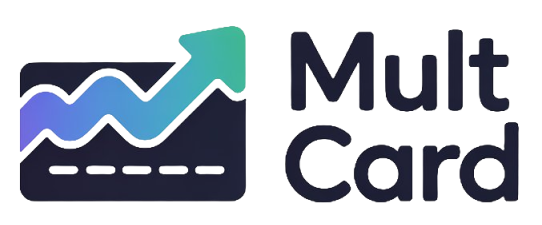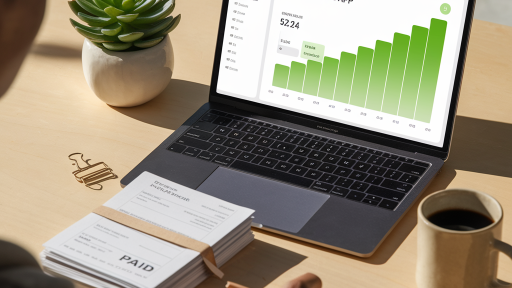Navigating the world of finance can often feel complex, with a wide array of tools and products available. When you need a sum of cash to cover a significant expense—be it an unexpected medical bill, a home renovation project, or consolidating high-interest debt—a personal loan often emerges as a powerful and flexible option.
But what exactly is it, and how does the process unfold from application to repayment? Understanding the mechanics behind this financial tool is the first step toward using it responsibly and effectively. This guide will break down everything you need to know, empowering you to decide if a personal loan is the right fit for your financial journey.
Understanding the Basics: What Exactly is a Personal Loan?
At its core, a personal loan is a type of installment loan. This means you borrow a fixed amount of money from a lender (like a bank, credit union, or online lender) and agree to pay it back in equal, regular installments over a predetermined period, known as the loan term. Each payment you make consists of two parts: a portion of the principal (the original amount borrowed) and a portion of the interest (the cost of borrowing the money).
Defining the Personal Loan
Unlike a mortgage, which is used for buying a house, or an auto loan, used for purchasing a vehicle, a personal loan is incredibly versatile. The funds can be used for almost any legitimate purpose. This flexibility is one of its primary attractions. Lenders typically provide the money as a lump-sum payment directly to your bank account, giving you immediate access to the cash you need.
Unsecured vs. Secured Personal Loans
Personal loans generally come in two main varieties: unsecured and secured. The difference lies in whether you need to provide collateral—an asset the lender can take if you fail to repay the loan.
- Unsecured Personal Loans: This is the most common type. Approval is based solely on your financial profile, including your credit score, income, and credit history. Because the lender takes on more risk without any collateral to back the loan, interest rates can be slightly higher.
- Secured Personal Loans: This type requires you to pledge an asset, such as a car, a certificate of deposit (CD), or a savings account, as security. This reduces the lender’s risk, which often translates into a lower interest rate or a larger loan amount for the borrower. If you default, the lender has the right to seize the collateral.
Here’s a simple comparison to highlight the key differences:
| Feature | Unsecured Personal Loan | Secured Personal Loan |
|---|---|---|
| Collateral Required | No | Yes (e.g., car, savings) |
| Lender’s Risk | Higher | Lower |
| Typical Interest Rate | Generally higher | Generally lower |
| Approval Basis | Creditworthiness (credit score, income) | Creditworthiness and value of collateral |
The Mechanics: How Do Personal Loans Work Step-by-Step?
The journey from needing funds to repaying a loan follows a clear, structured path. Understanding each stage can help demystify the process and prepare you for what to expect.
1. The Application Process
Your first step is to apply. Most lenders now offer simple online applications. You’ll need to provide essential information, including:
- Personal identification (name, address, Social Security number)
- Proof of income (pay stubs, tax returns, bank statements)
- Employment details
- The amount you wish to borrow and the intended use of the funds
Many lenders offer a “pre-qualification” step. This allows you to see potential loan amounts and interest rates with a soft credit inquiry, which does not affect your credit score.
2. Approval and Underwriting
Once you submit your application, the lender begins the underwriting process. They will thoroughly evaluate your financial health to determine your creditworthiness. Key factors include your Credit Score, your credit history, and your debt-to-income (DTI) ratio—a measure of how much of your monthly income goes toward paying debts. A strong credit profile and a low DTI ratio increase your chances of approval and help you secure a lower interest rate.
3. Receiving the Funds
If your application is approved, you will receive a formal loan offer that outlines the terms, including the loan amount, APR, and repayment schedule. After you review and electronically sign the loan agreement, the lender will disburse the funds. This is often a quick process, with many online lenders depositing the lump sum directly into your bank account within one to three business days.
4. The Repayment Phase
Repayment begins shortly after you receive the funds, typically within 30 days. You will make fixed monthly payments for the duration of the loan term, which commonly ranges from two to seven years. Most personal loans have a fixed interest rate, meaning your monthly payment will never change, making it easy to budget for. Some loans may have a variable rate, which can fluctuate over time based on market indexes.
Key Components of a Personal Loan Agreement
Before you accept any loan offer, it’s crucial to understand the fine print. Pay close attention to these three core components.
Principal, Interest Rate, and APR
- Principal: This is the total amount of money you borrow.
- Interest Rate: This is the percentage the lender charges for lending you the money. It does not include fees.
- Annual Percentage Rate (APR): This is the most important number for comparing loans. The APR represents the total annual cost of borrowing, as it includes both the interest rate and any associated fees, like an origination fee. Always compare loans using the APR.
Loan Term
The loan term is the length of time you have to repay the loan. A longer term results in lower monthly payments but means you’ll pay more in total interest over the life of the loan. A shorter term means higher monthly payments, but you’ll pay less interest overall and be debt-free sooner.
Fees and Penalties
Be aware of potential fees that can add to the cost of your loan:
- Origination Fee: A one-time fee some lenders charge for processing your loan, typically deducted from the principal before you receive the funds.
- Late Payment Fee: A penalty charged if you miss a payment deadline.
- Prepayment Penalty: A fee for paying off your loan before the term ends. This is less common today, but always check for it.
- Insufficient Funds (NSF) Fee: Charged if an automatic payment bounces due to a lack of funds in your account.
Common Uses for Personal Loans
The flexibility of personal loans makes them suitable for a wide range of financial goals and needs. Some of the most popular uses include:
- Debt Consolidation: Combining multiple high-interest debts (like credit cards) into a single loan with a lower, fixed interest rate.
- Home Improvement: Funding renovations, repairs, or upgrades to your home without needing a home equity loan.
- Major Life Events: Covering costs for weddings, moving, or vacations.
- Medical Expenses: Paying for procedures or bills not fully covered by insurance.
- Emergency Funding: Handling unexpected costs like a major car repair or an urgent family matter.
Pros and Cons: Is a Personal Loan Right for You?
Like any financial product, personal loans have both advantages and disadvantages. Weighing them carefully can help you make a smart decision.
| Pros | Cons |
|---|---|
| Predictable Payments: Fixed rates and terms make budgeting simple. | Interest Costs: You will always pay more than you borrowed. |
| Lower Rates Than Credit Cards: Often a cheaper way to borrow for large purchases. | Fees Can Add Up: Origination and late fees can increase the total cost. |
| Versatility: Funds can be used for nearly any purpose. | Requires Good Credit: The best rates are reserved for borrowers with strong credit scores. |
| Quick Funding: Access to cash is often very fast, especially with online lenders. | Impacts Credit: A new loan adds a hard inquiry and increases your debt load initially. |
How to Improve Your Chances of Approval
To secure the best possible terms on a personal loan, it’s wise to prepare your finances before you apply.
Check and Build Your Credit Score
Your credit score is a primary factor in a lender’s decision. Obtain a free copy of your credit report to check for errors. To improve your score, focus on paying all your bills on time and keeping your credit card balances low.
Lower Your Debt-to-Income Ratio
Your debt-to-income (DTI) ratio shows lenders how well you manage your debt. Most lenders prefer a DTI below 43%. You can lower your DTI by paying down existing debts or finding ways to increase your income.
Shop Around and Compare Lenders
Don’t accept the first offer you receive. Compare rates and terms from multiple sources, including your local bank, credit unions, and various online lenders. Use pre-qualification tools to see your estimated rates without harming your credit score.
Conclusion: Making an Informed Decision
A personal loan can be an excellent financial tool when used thoughtfully. It provides predictable payments, fast access to funds, and the flexibility to cover a wide variety of expenses. By understanding the application process, key terms, and what lenders look for, you can approach borrowing with confidence.
Ultimately, the decision to take on a new debt should not be taken lightly. Always ensure the monthly payment fits comfortably within your budget and that the loan helps you achieve a clear financial goal. For a deeper understanding of the consumer protections and regulations that govern this type of credit, it’s helpful to learn directly from resources that explain in detail how does a personal loan work and what your rights are as a borrower.






